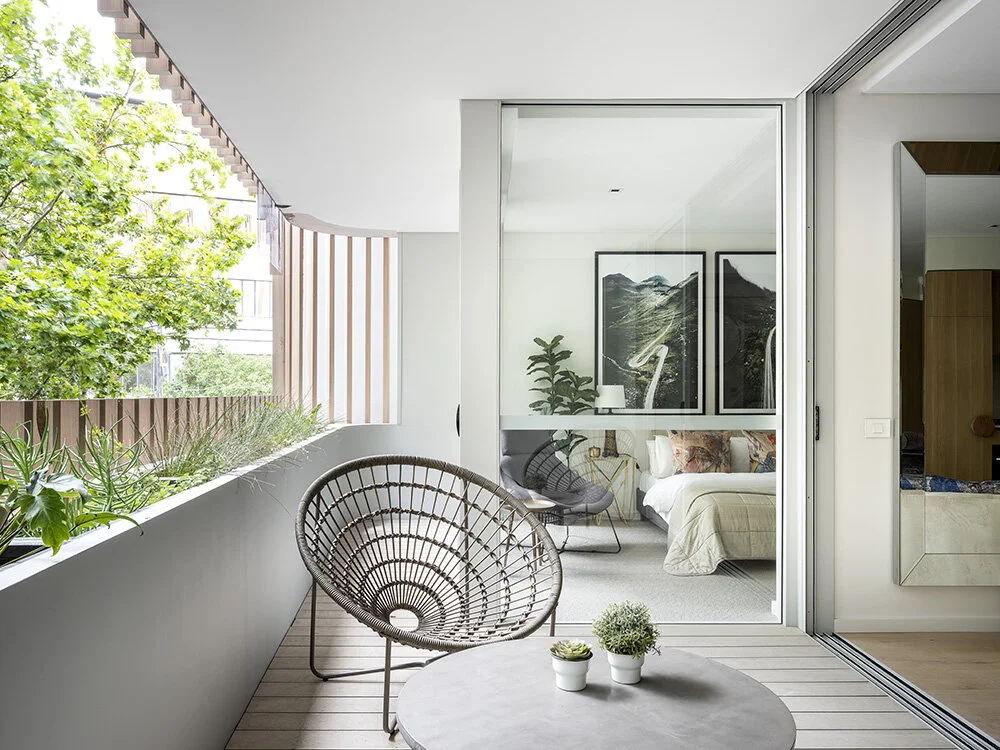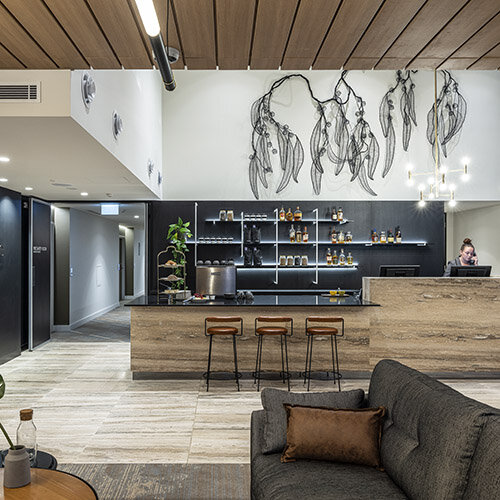Nature has always been a powerful tool in urban planning, architecture and design. Its positive impact on the human condition is undeniable, with 80% of people attributing the improvement to their mental health to being in nature.
A decisive turn to green architecture and living spaces that promote wellness through a connection with the natural world has been a key driver in creating sustainable environments that improve the quality of life of the occupants.
And now, the essential role of the outdoors is proving to be more critical than ever before.
The Isolated Reality of Homebound Living
Over the last couple of months, the role of the home has changed. With the global outbreak of COVID-19 and the social-distancing and self-isolation restrictions that are now in place, staying in isn’t a choice, it has become the new reality.
The indoors are still a safe oasis offering protection and respite from the outside world. At the same time, the global pandemic has transformed our interiors into places of isolation. With restricted ability to enjoy the outdoors, we are at risk of suffering negative impacts on our mental health.
The pandemic has already left an indelible mark on the global psyche - and the reality of being stuck indoors will stay with people worldwide for years to come. Architecture and design professionals will be pushed to find new ways to create future-proof, health and wellness-focused spaces suitable for isolated living, in the event a pandemic strikes again.
With nature’s proven impact on our mental health, could the principles of biophilic design hold the key to creating sustainable, soothing, and mentally stimulating spaces in the post-pandemic future?
Biophilic Design Makes Spaces Flourish
Derived from the word ‘biophilia’ which in ancient Greek translates to ‘the love of life’, the biophilic design creates environments anchored in multi-sensory experiences and the integration of elements such as organic shapes, natural materials, plants, fresh air, daylight or water features.
This human-centred approach was born out of the idea that humanity’s innate need for connection with nature has suffered through the process of urbanisation and technological advancement. In response to that, biophilic design incorporates natural elements into the built environment to improve the health and well-being of the occupants.
The benefits of this design approach cover a range of health and cognitive functions. Beyond improving well-being, biophilic design can also compound creativity, aid clarity of thought and reduce stress. It’s been applied with great success in environments where occupants spend extended periods, such as workplaces, educational facilities, health facilities and residential dwellings. In those contexts, the integration of natural elements helps improve cognitive performance, productivity, well-being and assists faster recovery.
Biophilic design incorporates natural elements into the built environment to improve the health and well-being of the occupants.
Inviting The Outdoors In
Through the use of organic shapes in construction and furnishing; appropriate airflow and temperature; diverse lighting and water features; and use of natural materials and visual patterns - biophilic design creates myriad opportunities to evoke nature and build a stress-relieving sanctuary. And as indicated in 14 Patterns Of Biophilic Design by Terrapin Bright Green, it can improve the well-being credentials of a space through a variety of elements and experiences.
Biophilic design allows designers to invite the outdoors into an indoor space both directly and indirectly. The direct inclusion of nature within the space can be achieved through elements like plants, water features or light. The indirect evocations of nature can take the form of specified materials, patterns, textures and colours resembling visual cues present in the natural environment - for example, wood grain or stone surface.
One of the easiest ways to directly insert nature in the built environment is through the incorporation of flora. Whether it’s the smart specification of indoor plants, creating a living wall in a courtyard or designing the space to offer a view of a leafy park across the road - the visual connection with elements of nature has a calming effect while the process of photosynthesis improves air quality.
However, while the direct inclusion of nature is central to any biophilic design, indirect inclusions of nature are just as important, and - from a designer’s point of view - arguably more so.
Natural Analogues
The indirect incorporation of nature allows designers to propose visual and tactile cues that mirror organic patterns, textures and colours to alleviate stress and improve comfort. This offers certain sustainable and practical benefits - especially where using natural materials might pose a challenge.
For instance, natural materials such as timber can be highly desirable but can pose a risk when it comes to fire safety. They can also be difficult to maintain. Here, timber-finish aluminium products offer a compelling alternative to real wood as they offer a wide range of realistic colours and textures, through which designers can closely emulate nature within their overall biophilic design scheme.
High-quality timber finish aluminium products, like Covet’s Ever Art Wood® fire-rated cladding series, provide excellent fire resistance along with ease of maintenance while preserving the calming benefits of a connection with nature. That means designers can prioritise visual benefits of biophilic design with maximum safety and minimal fuss for the occupants - promoting well-being by creating a more relaxing, comforting, sustainable and mindful space that’s easier to look after.
The Ever Art Wood® series consists of a wide range of realistic timber finish aluminium batten and panel cladding profiles. An external grade product, the realism of the available organic timber colours and patterns also means designers can - quite literally - bring an element of the outdoors indoors.
With the post-COVID-19 future uncertain, architects, designers and specifiers are looking to new and innovative ways of designing environments for our new reality. As biophilic design offers a reliable framework to incorporate the benefits of nature into our built environments, it could help us create dwellings of the future we can function in happily - isolated or not. Covet’s Ever Art Wood® timber look aluminium range gives designers the ability to evoke the positive visual effects of nature without compromising on the peace of mind that comes with specifying the highest-performance materials available.
Article featured in Architecture & Design, April 2020.
Photography © Covet International






